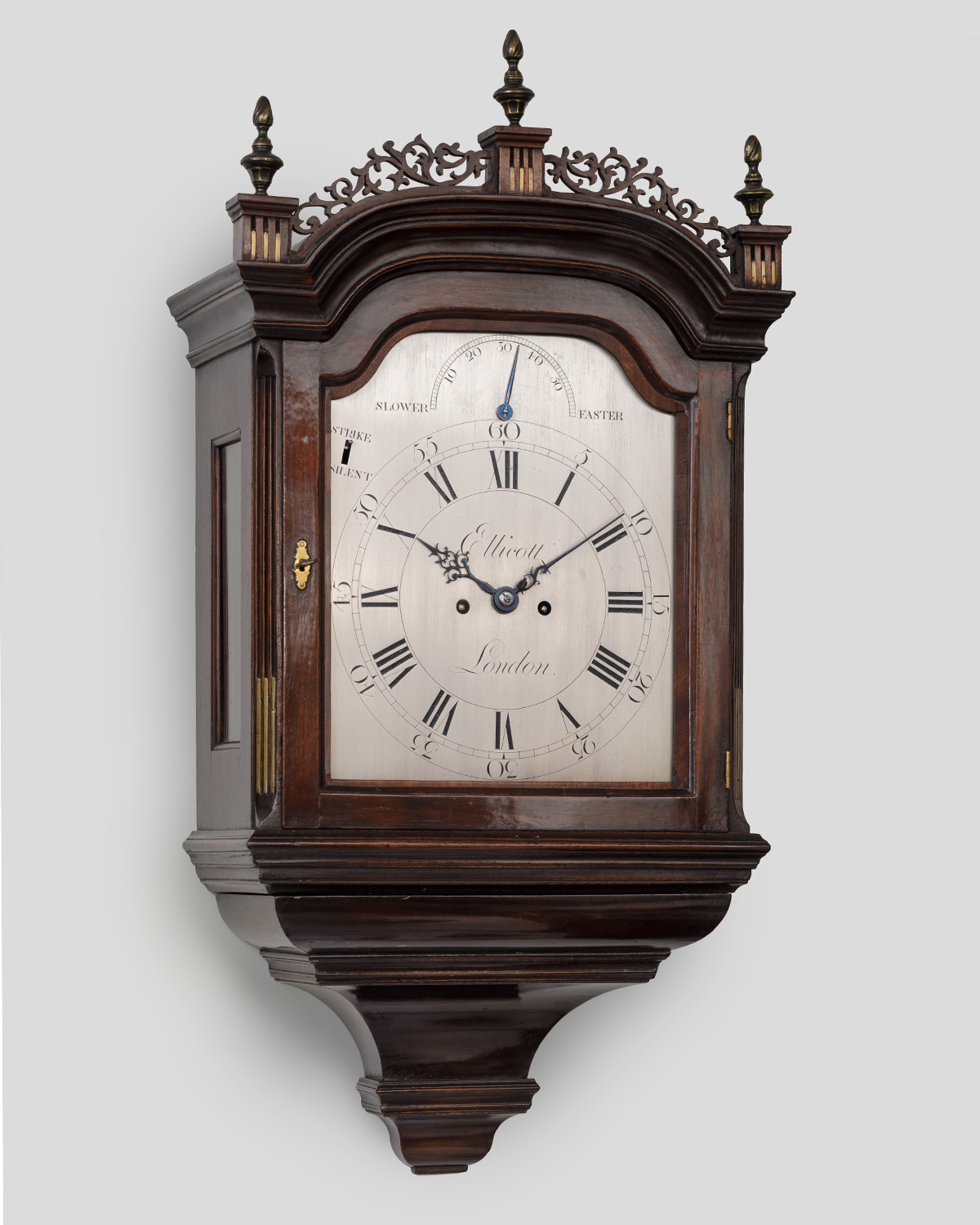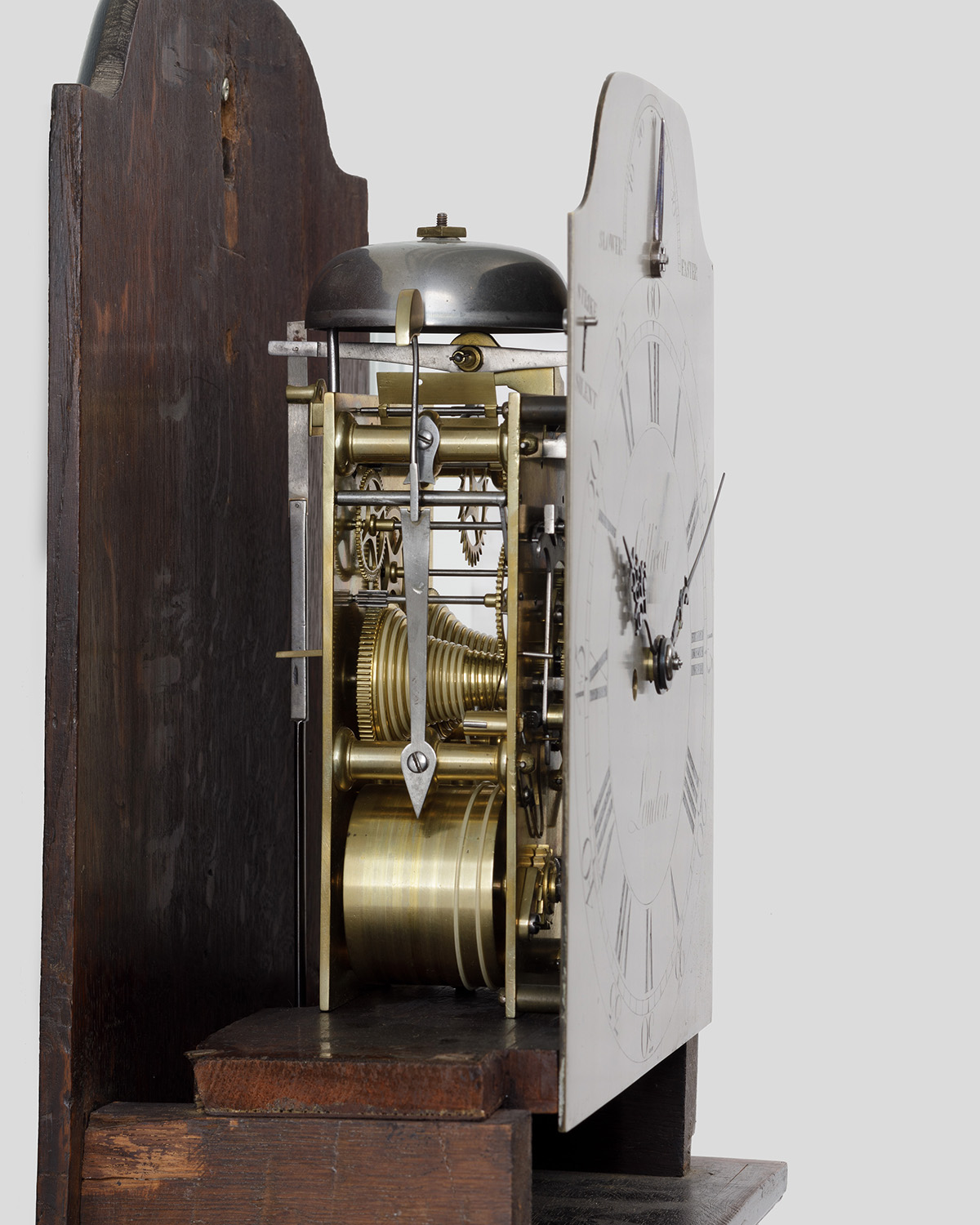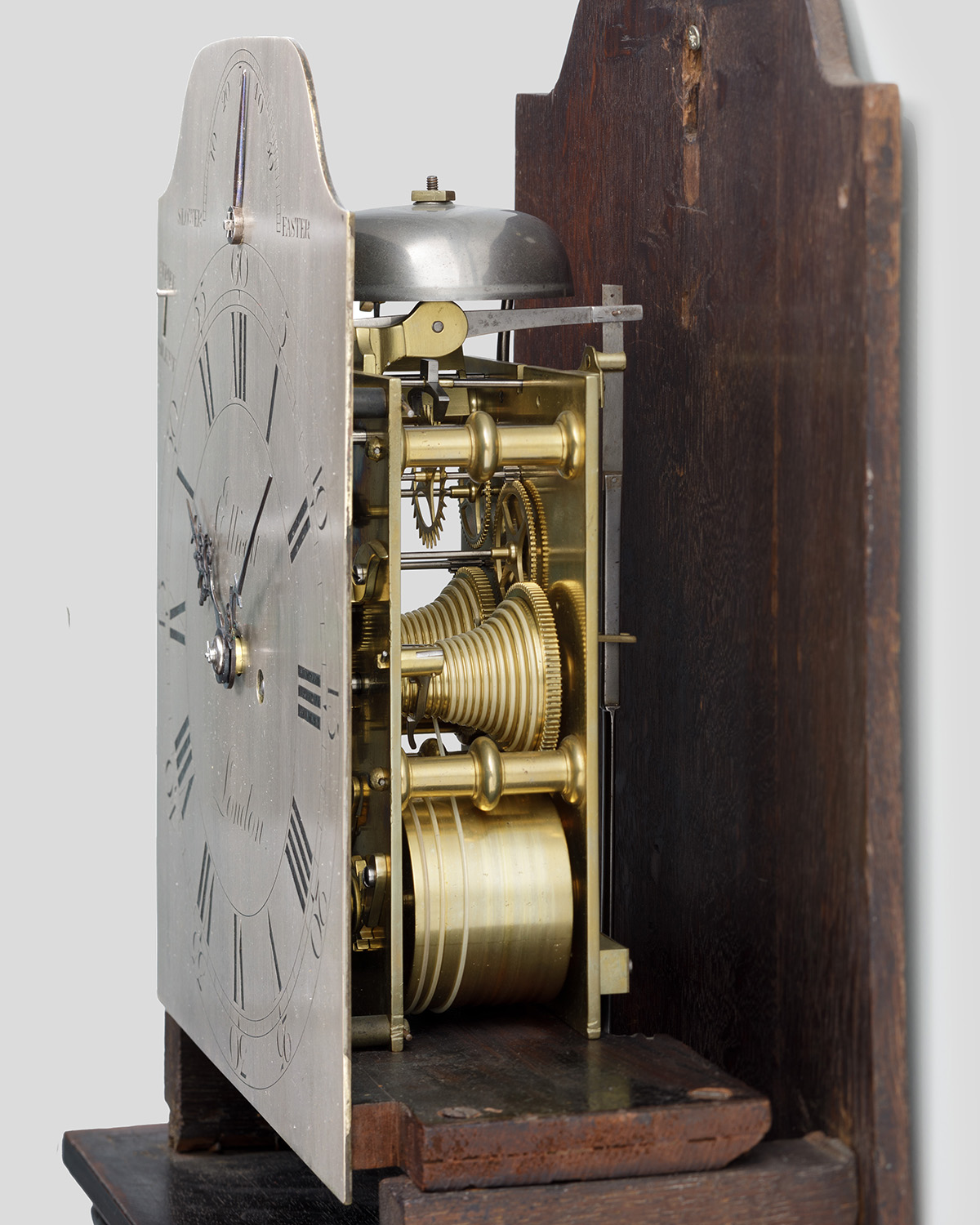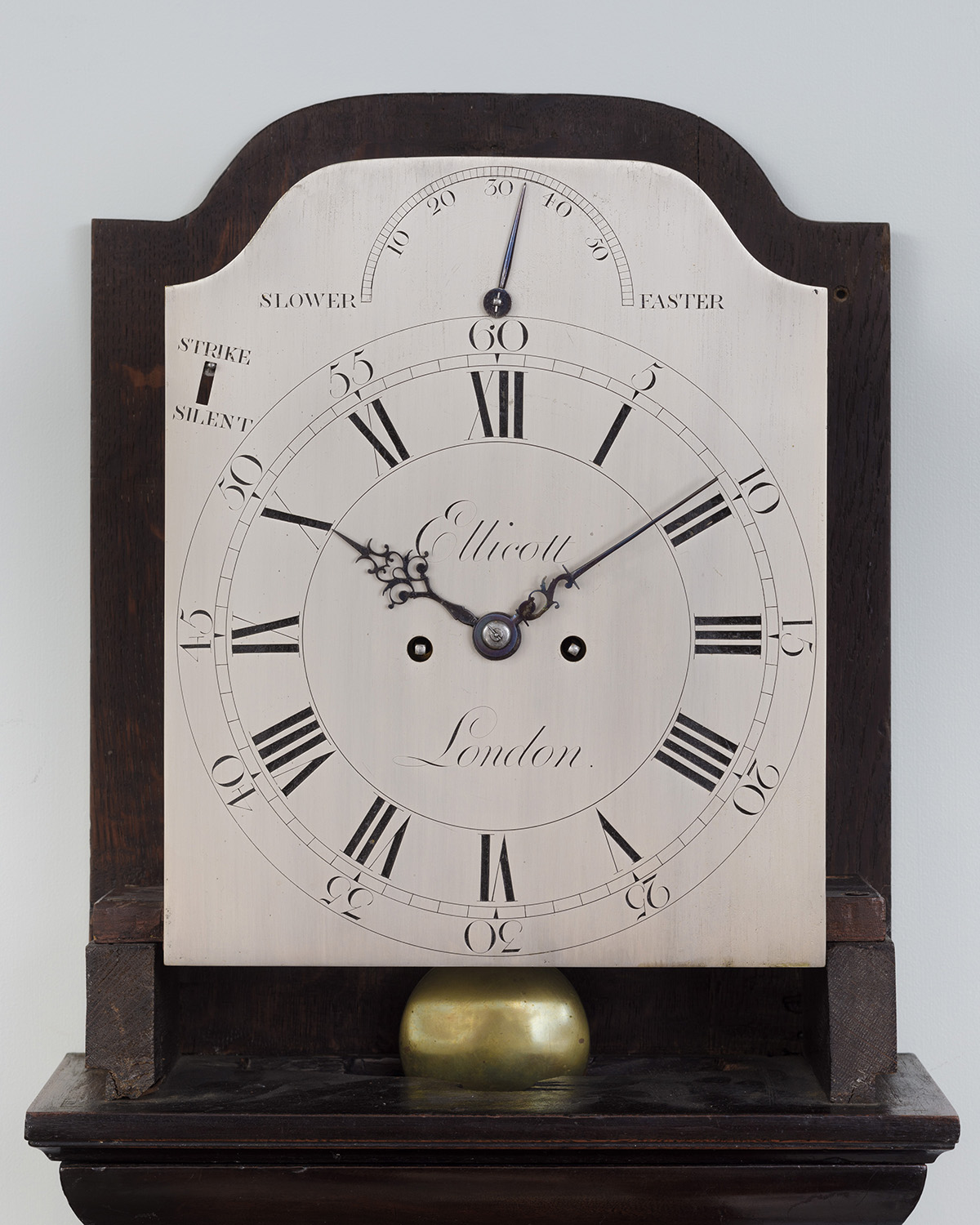[javascript protected email address]

John Ellicott, London




Circa 1770
Sold
30 inches high
A very fine and rare solid mahogany striking hooded wall clock with strike/silent and pendulum regulation. THE CASE With shallow break-arched top surmounted by three brass-fluted pedestals with flambeau finials embellished with a carved mahogany cresting, glazed sides; the front door flanked by brass-reeded and stop-fluted angles, the original bracket to the underside of the hood siding forward to reveal the special key compartment. THE DIAL With shallow-arch silvered brass dial has Roman and Arabic chapters, original pierced blued steel hands, signed Ellicott London in the centre, the arch set with a retrograde scale and blued steel hand for the pendulum regulation and with a strike/silent lever to the left side. THE MOVEMENT With five robust baluster-form pillars, twin spring barrels and fusees with gut lines, the going train with anchor escapement the hours struck on a single bell held above the plates, original seat board. JOHN ELLICOTT (II) John Ellicott was one of the greatest clockmakers of the 18th century, he was born in 1706, died in 1772; he was the son of a a fine clockmaker of the same name. Ellicott worked from St Swithin''''''''s Alley, Royal Exchange, London where his father John (d.1733) had made his workshop when he moved from Bodmin in Cornwall in the late 17th century. John Ellicott was a brilliant and inventive man who developed his own form of gridiron temperature compensated pendulum and was instrumental in the perfection of the cylinder escapement for pocket watches. His pocket watches were of the finest quality often with complex movements and with fine enamel dials and cases embellished with decorative enamel and chatelaines. He was clockmaker to King George III and was paid 150 pounds per annum in this role. In 1738 he was elected a fellow of the Royal Society and later published two articles in their ''''''''Philosophical Transactions''''''''. He supplied portable regulators to astronomers notably, Nevil Maskelyne, Charles Mason and James Cook for the recording of the transit of Venus. He was himself a keen astronomer and observed the transit of Venus in 1761 from an observatory built in his home in Hackney.
